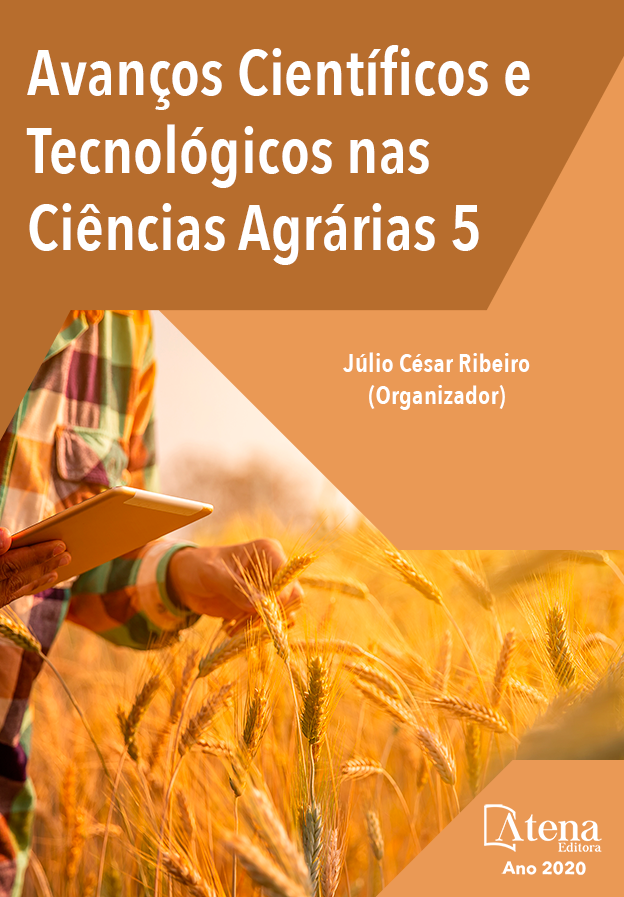
IN VITRO ACTIVITY OF PURPUREOCILLIUM LILACINUM ISOLATES AGAINST PHYTOPATHOGENIC FUNGI OF SORGHUM
O sorgo é o quinto cereal de importância mundial. Sua produtividade é ameaçada por fungos fitopatogênicos que reduzem o rendimento das culturas. Muitas espécies de Alternaria são contaminantes naturais do sorgo. O período de armazenamento desses grãos é um ponto crítico para o controle de fungos. Atualmente, há uma tentativa de reduzir o uso de agroquímicos e aplicar estratégias alternativas de controle, como os biopesticidas. Nesse contexto, o objetivo foi avaliar a atividade antifúngica in vitro de Purpureocillium lilacinum no crescimento de Alternaria. Culturas duplas desta espécie foram realizadas contra isolados potencialmente antagônicos. A avaliação macro e microscópica foi realizada e foram calculados cinco indicadores de antagonismo. Os mecanismos de interação envolvidos também foram determinados pela avaliação do efeito de metabólitos voláteis e não voláteis produzidos por antagonistas no crescimento de fungos fitopatógenos. Os três isolados de P. lilacinum apresentaram atividade inibitória variável de acordo com o tipo de ensaio e o fitopatógeno avaliado. No entanto, a inibição foi mais evidente com o isolado de P. lilacinum Ls e principalmente com o efeito dos compostos não voláteis. Este estudo demonstra que P. lilacinum pode ser considerado um antagonista promissor no controle de Alternaria. Esses resultados nos motivam a aprofundar a produção, o isolamento e a identificação dos compostos produzidos por essa espécie. O isolado de P. lilacinum Ls estudado pode ser outra ferramenta nas diferentes estratégias de controle biológico aplicadas à conservação de grãos de sorgo.
IN VITRO ACTIVITY OF PURPUREOCILLIUM LILACINUM ISOLATES AGAINST PHYTOPATHOGENIC FUNGI OF SORGHUM
-
DOI: 10.22533/at.ed.3132028097
-
Palavras-chave: Sorgo, Biopesticida; Interações fúngicas; Purpureocillium lilacinum; Alternaria.
-
Keywords: Sorghum, Biopesticide; Fungal interactions; Purpureocillium lilacinum; Alternaria.
-
Abstract:
Sorghum is the fifth cereal in importance worldwide. Its productivity is threatened by phytopathogenic fungi that reduce crop yields. Many species of Alternaria are natural contaminants of sorghum. The period of storage of those grains is a critical point to fungal control. Currently, there is an attempt to reduce the use of agrochemicals and to apply alternative control strategies such as biopesticides. In this context, the objective was to evaluate the in vitro antifungal activity of Purpureocillium lilacinum on the growth of Alternaria. Dual cultures of this specie were performed against potentially antagonistic isolates. The macro and microscopic evaluation was performed and five antagonism indicators were calculated. The interaction mechanisms involved were also determined by evaluating the effect of volatile and non-volatile metabolites produced by antagonist on the growth of phytopathogens fungus. The three P. lilacinum isolates had variable inhibitory activity according to the type of assay and phytopathogen evaluated. However, the inhibition was more evident with P. lilacinum Ls isolate and mainly with the effect of the non-volatile compounds. This study suggests that P. lilacinum could be considered a promising antagonist in the control of Alternaria. These results motivate us to go deeper in the production, isolation and identification of the compounds produced by this specie. The studied P. lilacinum Ls isolate could be another tool in the different biological control strategies applied to the conservation of sorghum grains.
-
Número de páginas: 16
- Cecilia Gortari
- Roque Hours
- Andrea Astoreca


